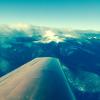Stupid stuff ; landing , starting?
-
Members Online
- hubcap
- salty
- PhateX1337
- ckb
- Wingfree
- exM20K
- LardLad
- Bike_rider
- flyingbarrel
- DonMuncy
- Fookz92
- Laura Storke
- dzeleski
- jlunseth
- 201er
- Ews1981
- Jeff_S
- ArtVandelay
- Brian W
- UteM20F
- mike_elliott
- Red Leader
- warbingtonmasonry
- phxcobraz
- MatthiasArnold
- eman1200
- ElderWhitehead1
- CAV Ice
- natdm
- N177MC
- lanejacobs84
- cmorris
- acekng1
- Captainhog
- Gflight
- warren.huisman
- Jake@BevanAviation
- Yetti
- AndreiC
- Hank


Recommended Posts
Join the conversation
You can post now and register later. If you have an account, sign in now to post with your account.